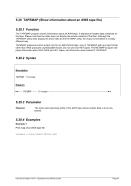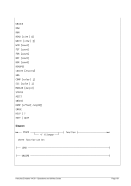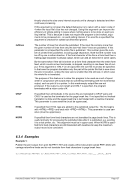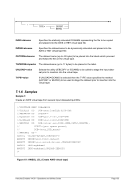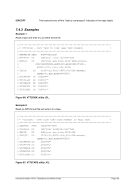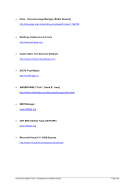ASCII
All subsequent labels generated are converted to ASCII before they are wri-
tten. This only affects labels. All data is copied exactly as it is read no matter
the setting of this command.
EBCDIC
All subsequent labels generated are not to be converted before they are wri-
tten. The implication is that the data is still in EBCDIC format. This only affects
labels. All data is copied exactly as it is read no matter the setting of this com-
mand.
VOL1
These commands write 80 byte labels to the tape image. The format of the
labels is controlled by the ASCII and EBCDIC commands. Except for the first 4
bytes of each input line none of the data is checked to make sure it is a valid
tape label. It is up to the user to provide correctly formatted labels as desired.
Essentially the entire 80 byte input record is written to the AWS TAPE image
as is (or converted to ASCII if this flag is set).
HDR1 - HDR2
See VOL1 above.
EOF1 - EOF2
See VOL1 above.
EOV1 - EOV2
See VOL1 above.
UHL1 - UHL8
See VOL1 above.
UTL1 - UTL8
See VOL1 above.
7.2.3 Examples
The following example reads the first dataset from DASD and a second one dataset from tape and writes
them to an AWS format dataset.
//MAKETAPE EXEC PGM=AWSUTIL
//STEPLIB DD DISP=SHR,DSN=my.load.library
//SYSPRINT DD SYSOUT=*
//SYSOUT DD DISP=(,CATLG),SPACE=(TRK,(15,15)),DSN=my.dsname
//INDATA DD DISP=SHR,DSN=my.input.sequential.data
//INTAPE DD DISP=OLD,DNS=my.real.tape.file
//SYSIN DD *
READ INDATA
TAPEMARK
TAPEFILE INTAPE
TAPEMARK
/*
Figure 63: AWSUTIL utility JCL




























































































